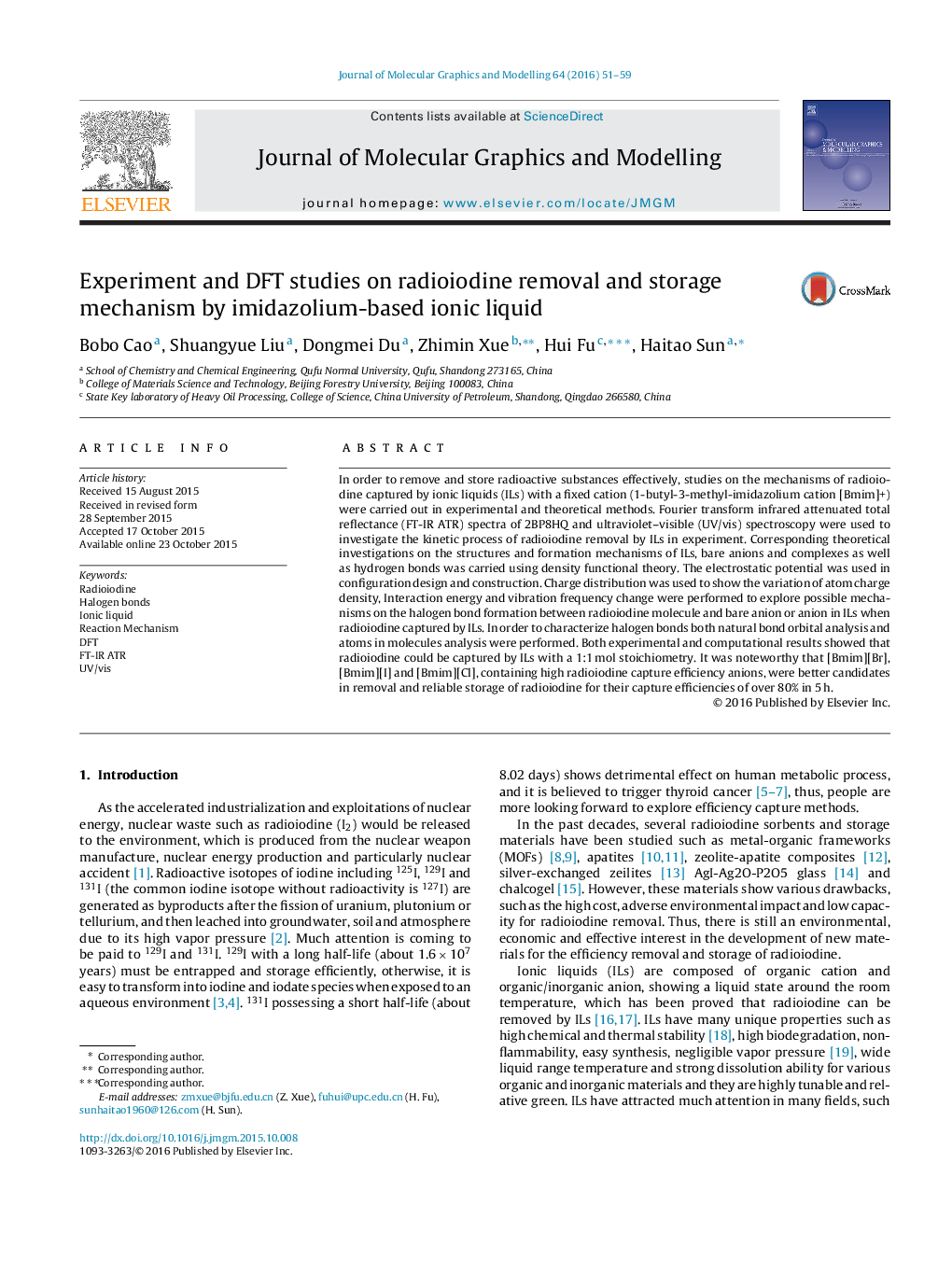| کد مقاله | کد نشریه | سال انتشار | مقاله انگلیسی | نسخه تمام متن |
|---|---|---|---|---|
| 442863 | 692413 | 2016 | 9 صفحه PDF | دانلود رایگان |
• Radioiodine removal mechanism by bare anions and corresponding 1-butyl-3-methyl-imidazolium cation ([Bmim]+) based ILs are investigated in both theoretical and experimental methods.
• [Bmim][Br], [Bmim][I] and [Bmim][Cl] are better candidates for radioiodine removal for their removal efficiencies of over 80% in 5 h.
• Investigation indicates intramolecular interaction in IL will weaken its radioiodine removal capacity.
In order to remove and store radioactive substances effectively, studies on the mechanisms of radioiodine captured by ionic liquids (ILs) with a fixed cation (1-butyl-3-methyl-imidazolium cation [Bmim]+) were carried out in experimental and theoretical methods. Fourier transform infrared attenuated total reflectance (FT-IR ATR) spectra of 2BP8HQ and ultraviolet–visible (UV/vis) spectroscopy were used to investigate the kinetic process of radioiodine removal by ILs in experiment. Corresponding theoretical investigations on the structures and formation mechanisms of ILs, bare anions and complexes as well as hydrogen bonds was carried using density functional theory. The electrostatic potential was used in configuration design and construction. Charge distribution was used to show the variation of atom charge density, Interaction energy and vibration frequency change were performed to explore possible mechanisms on the halogen bond formation between radioiodine molecule and bare anion or anion in ILs when radioiodine captured by ILs. In order to characterize halogen bonds both natural bond orbital analysis and atoms in molecules analysis were performed. Both experimental and computational results showed that radioiodine could be captured by ILs with a 1:1 mol stoichiometry. It was noteworthy that [Bmim][Br], [Bmim][I] and [Bmim][Cl], containing high radioiodine capture efficiency anions, were better candidates in removal and reliable storage of radioiodine for their capture efficiencies of over 80% in 5 h.
The electrostatic potential surface (ESP) of the complexes of I2 with [Bmim][Br] illustrates halogen bond are generated when radioiodine is captured by [Bmim][Br]. The efficiency of iodine capture by ILs depends on halogen bond strength, which has been confirmed by both theoretical and experimental methods. [Bmim][Br], [Bmim][I] and [Bmim][Cl], containing the high radioiodine removal efficiency anions ([Br]−, [I]− and [Cl]−), are better candidates for removal and reliable storage of radioactive iodine for their removal efficiencies of over 80% in 5 h.Figure optionsDownload high-quality image (116 K)Download as PowerPoint slide
Journal: Journal of Molecular Graphics and Modelling - Volume 64, March 2016, Pages 51–59
